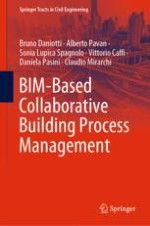2020 | OriginalPaper | Buchkapitel
4. Collaborative Working in a BIM Environment (BIM Platform)
verfasst von : Bruno Daniotti, Alberto Pavan, Sonia Lupica Spagnolo, Vittorio Caffi, Daniela Pasini, Claudio Mirarchi
Erschienen in: BIM-Based Collaborative Building Process Management
Aktivieren Sie unsere intelligente Suche, um passende Fachinhalte oder Patente zu finden.
Wählen Sie Textabschnitte aus um mit Künstlicher Intelligenz passenden Patente zu finden. powered by
Markieren Sie Textabschnitte, um KI-gestützt weitere passende Inhalte zu finden. powered by
